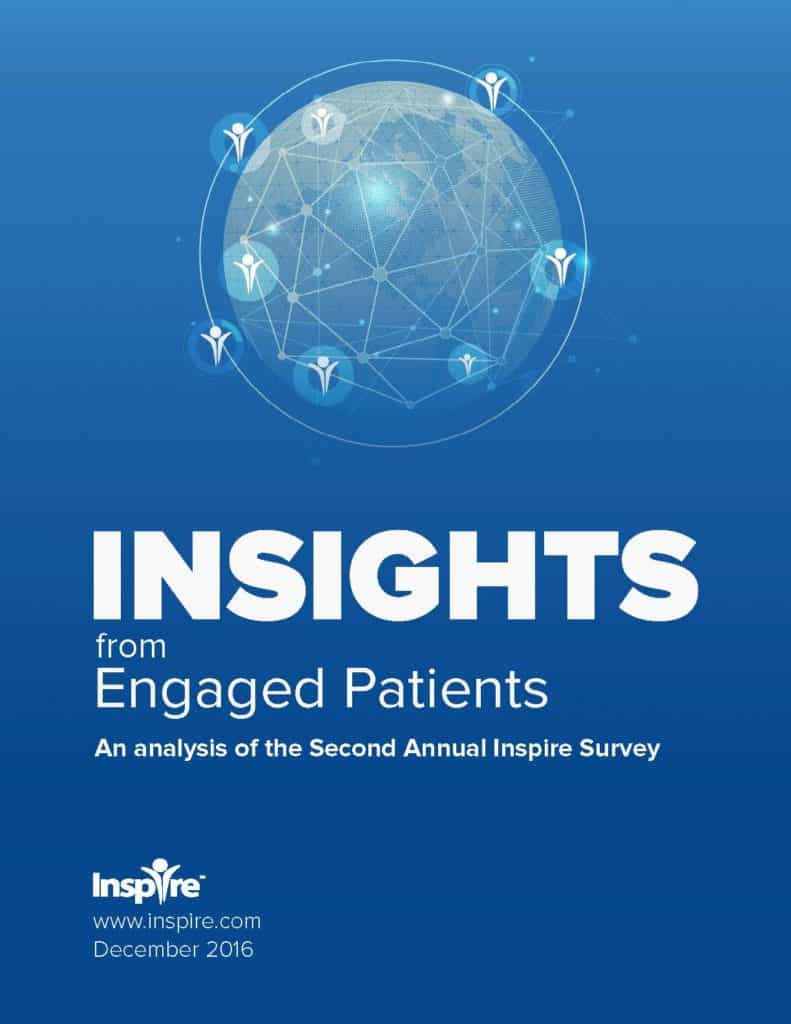Mobilizing Pharma: Mobile Apps and Devices

Today, fifty percent of Inspire’s members come to the community through their smartphones. Another twenty percent came through tablets.1 Mobile behavior has changed so much in just a few years that we wondered how patients are using mobile apps on their devices to manage their health conditions.
In our 2015 Annual Survey, 72% of responding Inspire members had never used mobile apps or tools for healthcare.2 By 2016, 50% of the respondents said they used these resources to manage their health.3
For the 28% that reported using mobile resources in the 2015 survey, the top uses were to help prepare for physician appointments, to search for information online and to set up dosing reminders.2
In particular, the percent of smartphone users that searched for information online increased dramatically from 56% in 2015 to 71% in 2016.3
Is it time to mobilize pharma?
Yes, and some companies are already finding ways to do it. In 2016, efforts to engage patients on mobile devices have focused on clinical trial recruitment and data collection and chronic disease management.
Mobile apps can help mitigate the distance between patients who may be eligible for a clinical trial and the actual trial location. For example, researchers can track and connect with participants remotely via wearable technology.
“Technology really is enabling us to treat a large number of geographically diverse patients,” said Greg Powell, director of Safety Evaluation and Risk Management at GlaxoSmithKline.1
Some companies have chosen to focus their mobile strategies on patients with chronic disease, particularly diabetes and asthma.
For example, Eli Lilly invested in insulin pen caps linked to an app that reminds patients with diabetes to take their medication and provides text access to a support team, if the patient needs it. Further, in November 2016, the FDA approved a digital sensor made by Propeller Health for GlaxoSmithKline’s Ellipta inhaler, which is used to treat asthma and chronic obstructive pulmonary disease.4
Such technology could lead to improved outcomes for patients. A study published in Thorax showed that the SmartInhaler by Adherium in the UK significantly improved adherence in children.5
Even though these are exciting examples; overall, pharma has been cautious in app development due in part to three main barriers:
1) General trends in adoption and usage
Mobile users in the general public have access to a large number of apps, but 62% of users will use an app only 11 times before it’s deleted.6
2) Phama’s past practices
For pharma in particular, a 2014 report of industry-specific apps faulted companies for limited public availability and largely focusing on pharma products. This made each app less generalizable and more concentrated on an individual product, which may explain the poor penetration into the market.7
3) FDA regulations
At this point, the ambiguity of FDA guidelines can slow down app development. Determining whether their app would be considered a medical device can be difficult. To assure they are within guidelines, pharma may err on the side of apps that do not answer patients’ needs. The uncertainty of what is, or is not, regulated as a medical device may be hindering pharma’s fuller activity in mobile.
Final Thoughts
For pharmaceutical companies interested in developing mobile apps, the 2015 and 2016 Annual Surveys provide guidance.
Patients under the age of 50 are much more likely to use a smartphone app or tool. Most patients (73%) use their smartphone for more than one health-focused use. Thirty percent of respondents that haven’t used a smartphone for healthcare believe that using some type of mobile app/tool would be indeed be helpful in managing their medical conditions or general health. This number is more prominent among younger respondents.
A focus on younger smartphone users to learn what they need to better cope with their conditions is a great starting point.
Inspire offers a trusted community to patients and caregivers. Our goal with this blog, this website and our content is to provide the life science industry access to the true, authentic patient voice. In so doing, we support faithful operationalization of patient-centricity. Take a look at our case studies, eBooks and news outlet coverage.
References:
1 Medicine X 2016 Halftime Show day 2 https://youtu.be/Uy_QxsN8B04
2 Inspire 2015 survey https://corp.inspire.com/resource/1st-inspire-annual-survey-2015/
3 Inspire 2016 survey https://corp.inspire.com/resource/insights-from-engaged-patients/
4 https://www.accessdata.fda.gov/cdrh_docs/pdf14/K140638.pdf
5 http://thorax.bmj.com/content/early/2016/11/04/thoraxjnl-2015-208171
6 https://techcrunch.com/2016/05/31/nearly-1-in-4-people-abandon-mobile-apps-after-only-one-use/
7 http://research2guidance.com/why-pharma-companies-have-no-substantial-impact-on-the-mhealth-app-economy/
8 mobilemedicalapps@fda.hhs.gov






